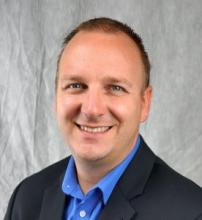Avoiding The Healthcare IT Strikeout

The ubiquitous feeding frenzy for healthcare IT began with the introduction of the Affordable Care Act four years ago, and hasn't stopped.
As competition becomes fiercer and decisions are being made faster and without adequate time for proper due diligence, many hospitals and staff augmentation firms feel they have found a way out. The belief that a properly trained pure IT individual can fill the role of a Healthcare IT Subject Matter Expert (SME) is becoming more widely accepted.
I tend to think of a hospital’s IT individuals as a baseball team. The everyday players have an understanding of the entire game, fielding, hitting, base running, etc., while the designated hitter or DH is an individual that only hits. He has lots of power, and the team wants him to focus on hitting, nothing else. He is, in all accounts of the word, a specialist. You can think of IT and HIT in the same context. SMEs are just that – a specialist. They focus on their niche.
When a market changes and the specialists are now more in demand, organizations (including baseball teams) will look for less costly alternatives to fill the void. An everyday player at a lower rate, if trained correctly, can take the DH role.
Success boils down to the intricacies of the role. At the specialist level, the slightest mistake can quickly become a glaring issue. In baseball, a half-inch can mean the difference between a home run and a lazy fly ball. Thus, the attention to detail needed is extremely high. SME’s, not unlike the designated hitter, have more specific issues than typical IT individuals. The users (physicians and clinicians) must have trust that the SME has an understanding of what they face on a daily basis. Change management can be a very demanding task and this is made dramatically more difficult if the users do not believe the SME has a strong understanding of how one clinical workflow intertwines with another.
If you have ever listened to the play-by-play analysts of a baseball game, you can become lost in what they are talking about. With terms like RBI, ERA, OBP, WHIP, etc. it can seem like they are speaking a foreign language that only they can understand. Healthcare is no different, with an exotic terminology of its own. Communication is a key component to a successful implementation. If the learning curve of terminology is drastically high, the project can screech to a crawl.
If just training won’t cut it, what can a hospital do to alleviate its costs? One thought becoming more common is the training of tech-savvy clinicians, often called “super-users.” While a clinician shortage has tamed this somewhat, the idea of giving a super-user the necessary classroom knowledge remains less painful than the alternatives. Another practice rapidly becoming popular is teaming a super-user with a SME. The knowledge transfer can be relatively seamless, and will perpetuate trust.
Although both thought processes hold merit, they do come with drawbacks. The specialists are valuable, and with other hospitals willing and able to take talent, the primordial revolving door can take hold quickly. There is nothing more frustrating for a hospital executive than to train an employee to only lose them to a competitor.
While an everyday player can substitute for the DH on some things, and relieve some stress, the possible downside makes the transition a tricky one at best. An everyday player may make contact, but is that what is needed at this time? With deadlines approaching quickly, I’d rather have my specialist at the plate, as he gives my team the best chance at a home run, and thus winning.
Jeff Urban is the area vice president of the MedSys Group, where he is responsible for the management of business development in the west, Great Lakes, and desert regions.






